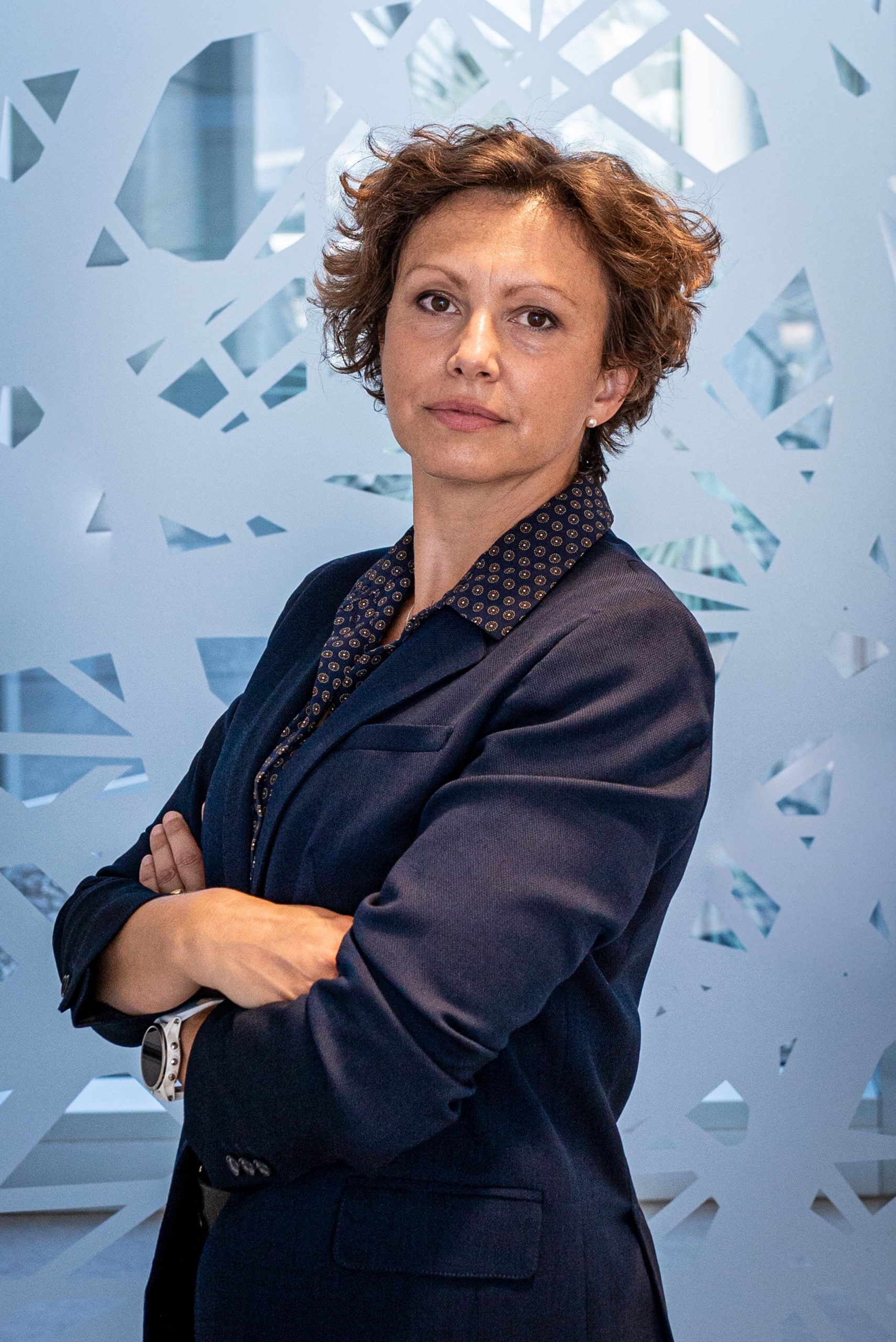
Gaia Pigino
- Associate Head of Structural Biology Research Centre, Structural biology
- Research Group Leader, Pigino Group
Gaia Pigino is a biologist, currently Associate Head of the Structural Biology Center at Human Technopole, after 9 years as Research Group Leader at the Max Planck Institute CBG in Dresden. She collaborate with Alessandro Vannini to develop the Centre for Structural Biology. Gaia’s laboratory studies molecular mechanisms and principles of self-organisation in cilia and other subcellular structures that are of fundamental importance for human health and disease.
CURRENT POSITION
| Since 2021 | Associate Head of the Structural Biology Center at Human Technopole, Milan, Italy |
| Since 2012 | Research Group Leader at MPI-CBG, the Max Planck Institute of Molecular Cell Biology and Genetics, Dresden, Germany |
POSTDOCTORAL RESEARCH
| 2010-2012 | Postdoctoral EMBO Long Term fellow Laboratory of Biomolecular Research (BMR), Department of Biology and Chemistry, Paul Scherer Institute (PSI) Switzerland. Supervisor: Prof. T. Ishikawa. |
| 2009-2011 | Postdoctoral researcher Institute for Molecular Biology and Biophysics, Swiss Federal Institute of Technology (ETH Zürich), Zurich, Switzerland. Supervisor: Prof. T. Ishikawa. |
| 2007-2009 | Postdoctoral MIUR research fellow Fellowship of the “Ministero Italiano dell’Istruzione, dell’Università e della Ricerca”. Laboratory of Cryotechniques for Electron Microscopy, Department of Evolutionary Biology, University of Siena. Supervisor: Prof. P. Lupetti. |
| 2009 | Participant at the Physiology Course at MBL in Woods Hole Marine Biological Laboratory, Woods Hole. Directors: Dyche Mullins and Claire Waterman. |
EDUCATION
| 2003-2007 | Ph.D. Student (Ph.D. Fellowship by the Italian government “Ministero Italiano dell’Istruzione, dell’Università e della Ricerca”). Department of Evolutionary Biology, University of Siena. Supervisor: Prof. F. Bernini and Prof. C. Leonzio. |
| 2002 | Diploma in Natural Science (Summa cum laude). University of Siena, Italy. Thesis supervisors: Prof. C. Leonzio and Prof. F. Bernini. |
OTHER POSITIONS
| 2003 | Research Associate. Department of Environmental Sciences G. Sarfatti, University of Siena. Advisor: Prof. C. Leonzio |
AWARDS and FUNDING
| 2022 | EMBO Member |
| 2019 | DFG Grant – GAČR-DFG Cooperation |
| 2018 | PoL starting fellowship (from the Dresden Excellence Cluster ‘Physics of Life’) |
| 2018 | Keith R. Porter Fellow Award for Cell Biology |
| 2018 | ERC Consolidator Grant (ERC-2018-COG N#819826 CiliaTubulinCode) |
| 2018 | Excellence Cluster ‘Physics of Life’, as a core Principal Investigator |
| 2010 | EMBO Long Term fellowship |
| 2009 | Scholarship from the Marine Biological Laboratory (Woods Hole, Massachusetts) MBL Physiology Course. |
| 2007 | Post-Doctoral Research fellowship from MIUR. |
| 2003 | Ph.D. Fellowship from MIUR. |
Fellowship to students and postdocs
| 2022 | EMBO Long Term Fellowship to Helen Foster |
| 2021 | EMBO Postdoc Fellowship to Nikolai Klena |
| 2019 | HFSP Postdoc Fellowship to Adrian Nievergelt |
| 2018 | EMBO Long Term Fellowship to Adrian Nievergelt |
| 2017 | Marie Curie Fellowship to Adam Schröfel (H2020-MSCA-IF-2016) |
| 2015 | DIGS-BB Fellowship to Guendalina Marini |
| 2012 | DIGS-BB Fellowship to Ludek Stepanek |
Google Scholar
Contacts
Follow on
Publications
-
10/2024 - Current Biology
Protofilament-specific nanopatterns of tubulin post-translational modifications regulate the mechanics of ciliary beating
Controlling ciliary beating is essential for motility and signaling in eukaryotes. This process relies on the regulation of various axonemal proteins that assemble in stereotyped patterns onto individual microtubules of the ciliary structure. Additionally, each axonemal protein interacts exclusively with determined tubulin protofilaments of the neighboring microtubule to carry out its function. While it is […]
-
08/2024 - Cell
Extensive structural rearrangement of intraflagellar transport trains underpins bidirectional cargo transport
Bidirectional transport in cilia is carried out by polymers of the IFTA and IFTB protein complexes, called anterograde and retrograde intraflagellar transport (IFT) trains. Anterograde trains deliver cargoes from the cell to the cilium tip, then convert into retrograde trains for cargo export. We set out to understand how the IFT complexes can perform these two […]
-
05/2024 - Europe PMC
Tubulin tyrosination/detyrosination governs the spatial segregation of intraflagellar transport trains on axonemal microtubule doublets
Assembly and function of cilia rely on the continuous transport of ciliary components between the cell body and the ciliary tip. This is performed by specialized molecular machines, known as Intraflagellar Transport (IFT) trains. Anterograde IFT trains are powered by kinesin-2 motors and move along the B-tubules (enriched in detyrosinated tubulin) of the ciliary microtubule […]
-
05/2024 - bioRxiv
Tubulin tyrosination/detyrosination regulates the sorting of intraflagellar transport trains on axonemal microtubule doublets
Assembly and function of cilia rely on the continuous transport of ciliary components between the cell body and the ciliary tip. This is performed by specialized molecular machines, known as Intraflagellar Transport (IFT) trains. Anterograde IFT trains are powered by kinesin-2 motors and move along the B-tubules (enriched in detyrosinated tubulin) of the ciliary microtubule […]
-
05/2024 - Current Opinion in Cell Biology
Tubulin posttranslational modifications through the lens of new technologies
The Tubulin Code revolutionizes our understanding of microtubule dynamics and functions, proposing a nuanced system governed by tubulin isotypes, posttranslational modifications (PTMs) and microtubule-associated proteins (MAPs). Tubulin isotypes, diverse across species, contribute structural complexity, and are thought to influence microtubule functions. PTMs encode dynamic information on microtubules, which are read by several microtubule interacting proteins and […]